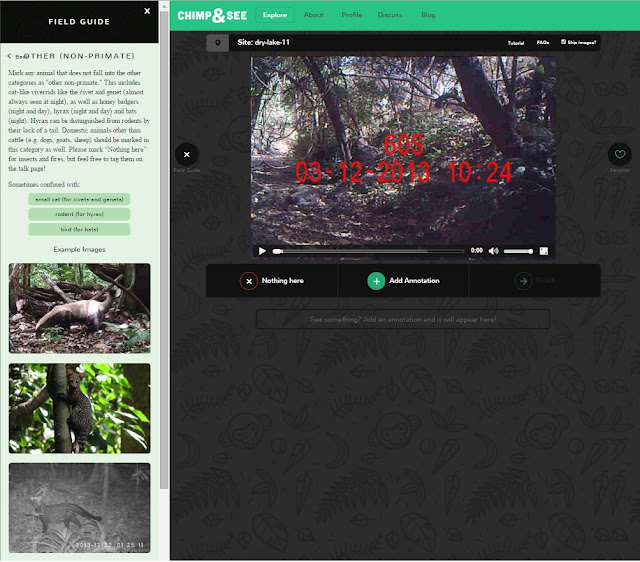It's the last day of the year so we wanted to thank you all for working on Chimp&See with us! Our citizen scientists and moderators are truly amazing and we look forward to a great 2016 with you all, full of new discoveries and fun videos!
A special thank you to the moderators: Quia, Ksigler, AnLand, Jwidness & Yshish for their incredible dedication this year!
Pant Hoots for everyone and wishing you all a great start to the new year!
If you want to see the best videos of 2015 and vote on your favourites like the one of Esme below, go here http://cands.polldaddy.com/s/bestof2015
A special thank you to the moderators: Quia, Ksigler, AnLand, Jwidness & Yshish for their incredible dedication this year!
Pant Hoots for everyone and wishing you all a great start to the new year!
If you want to see the best videos of 2015 and vote on your favourites like the one of Esme below, go here http://cands.polldaddy.com/s/bestof2015

















